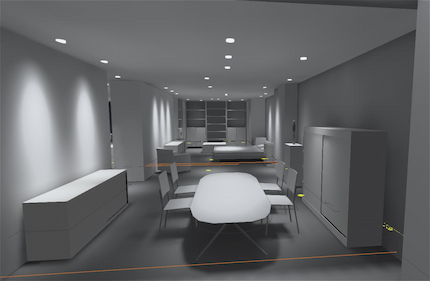Nov 23, 2023
Led Lighting Has Revolutionized The World Architectural Design, Enabling Creative Lighting Solutions That Shape The Aesthetics And Functionality Of Buildings And Spaces. With Its Numerous Advantages And Flexibility, Led Lighting Has Become a Popular Choice For Architects And Designers. In This Article, We Will Delve Into The Fascinating World Of Led Lighting Design And Its Impact On Architectural Spaces.
1. Enhancing Aesthetics:
Led Lighting Provides Architects And Designers With Endless Possibilities To Create Remarkable Lighting Effects That Enhance The Aesthetics Of Architectural Structures. By Strategically Placing Led Lights, Architectural Details, Textures, And Forms Can Be Accentuated, Creating Visually Stunning Environments. From Highlighting Facades And Sculptures To Illuminating Interior Spaces, Led Lighting Design Adds Depth, Drama, And a Touch Of Magic To Architectural Structures.
2. Energy Efficiency And Sustainability:
Led Lighting Is Renowned For Its Energy Efficiency, Making It An Eco-Friendly Choice For Architectural Applications. Led Lights Consume Significantly Less Energy Compared To Traditional Lighting Sources, Reducing Energy Costs And Carbon Footprint. Additionally, Led Lights Have a Longer Lifespan, Minimizing The Need For Frequent Replacements And Further Reducing Waste. The Integration Of Led Lighting Into Sustainable Architecture Aligns With The Growing Emphasis On Environmentally Conscious Design Practices.
3. Flexibility And Versatility:
Led Lighting Offers Architects And Designers Immense Flexibility In Terms Of Design Possibilities. Led Lights Come In Various Shapes, Sizes, Colors, And Intensities, Allowing For Customizable Lighting Solutions To Suit Diverse Architectural Styles And Requirements. Whether It's Creating Dynamic Lighting Schemes, Color-Changing Effects, Or Adjustable Brightness Levels, Led Lighting Provides The Versatility To Adapt To Different Lighting Scenarios And Moods.
4. Functional Illumination:
Architectural Spaces Demand Not Only Aesthetic Appeal But Also Practical Functionality. Led Lighting Excels In Providing Efficient And Effective Illumination For Various Areas Within a Building. Led Downlights, Linear Lights, Panel Lights, And Spotlights Can Be Used To Illuminate Workspaces, Lobbies, Hallways, And Meeting Rooms, Ensuring Optimal Visibility And Comfort For Occupants. The Directional Nature Of Led Lighting Allows For Precise Lighting Control And Reduces Light Wastage.
5. Integration With Smart Systems:
The Marriage Of Led Lighting And Smart Technology Has Opened Up Exciting Possibilities For Architectural Lighting Design. Led Lights Can Be Seamlessly Integrated With Intelligent Control Systems, Enabling Automation, Scheduling, Dimming, And Color-Changing Capabilities. This Integration Enhances Energy Efficiency, Simplifies Maintenance, And Provides Dynamic Lighting Options For Creating Engaging Experiences Within Architectural Spaces.
Conclusion:
Led Lighting Design Has Revolutionized The Field Of Architecture, Enabling Breathtaking Visuals, Energy Efficiency, And Adaptable Illumination Solutions. Its Flexibility, Sustainability, And Integration With Smart Systems Make It An Ideal Choice For Architects And Designers Seeking Innovative Lighting Solutions For Commercial, Residential, And Public Spaces. As Led Technology Continues To Evolve, The Future Of Architectural Lighting Design Holds Infinite Creative Potential.
